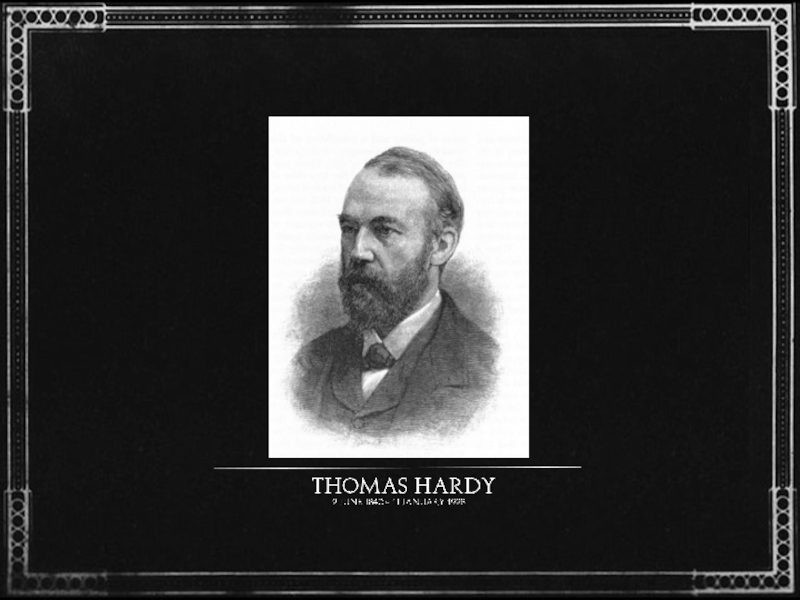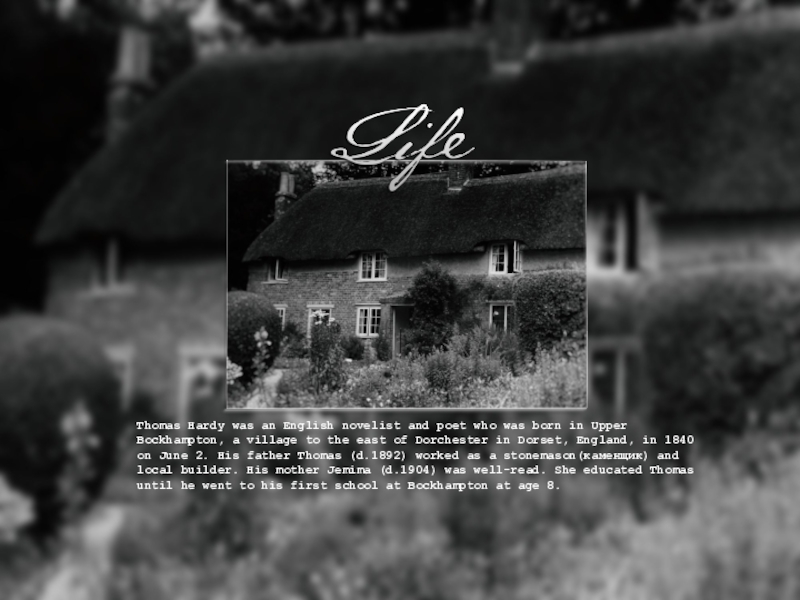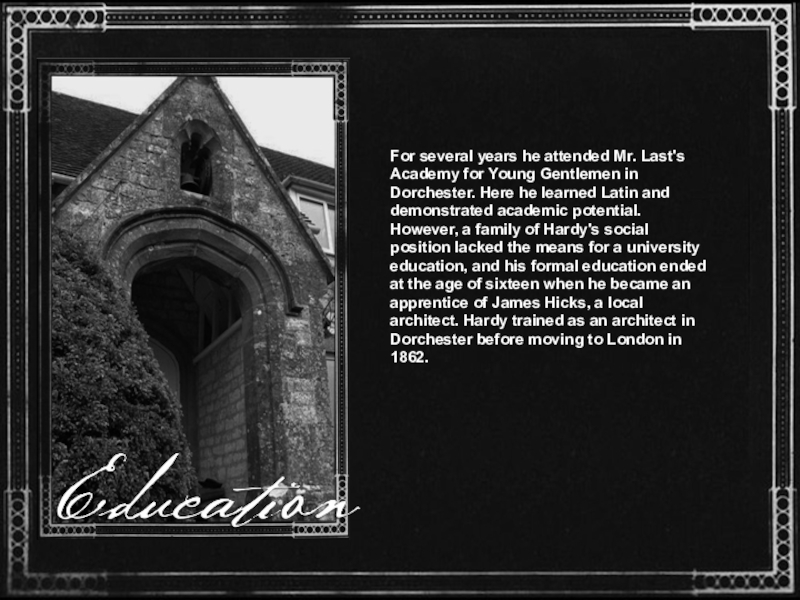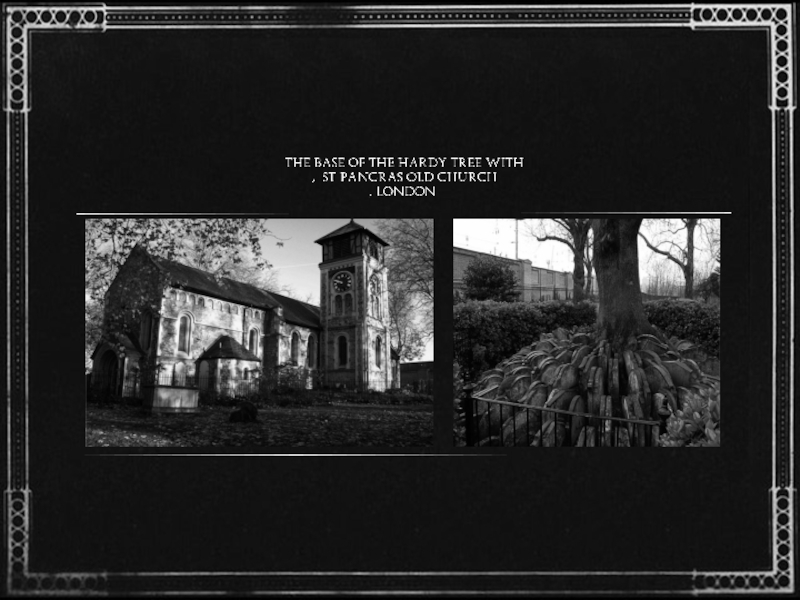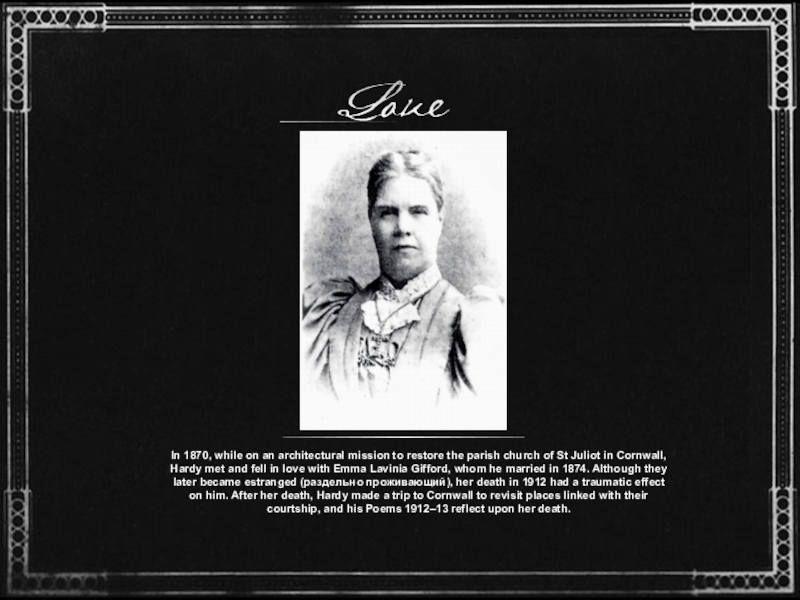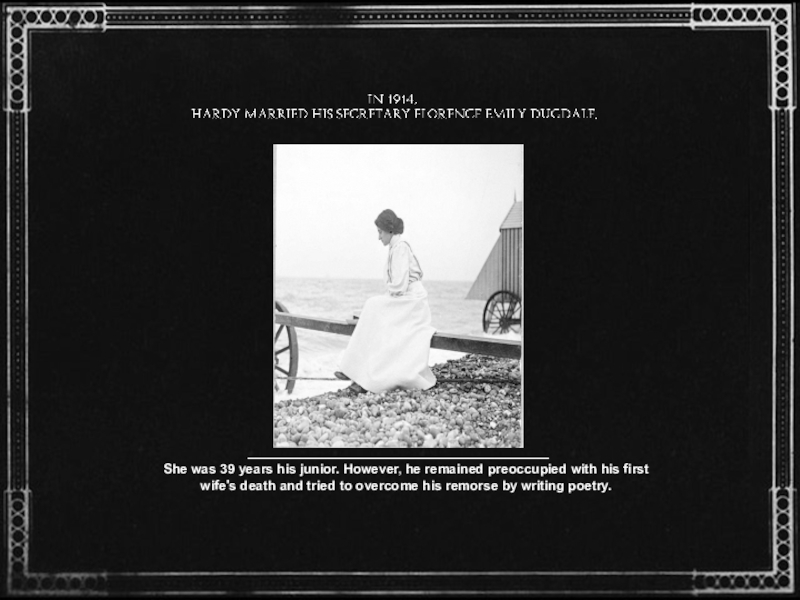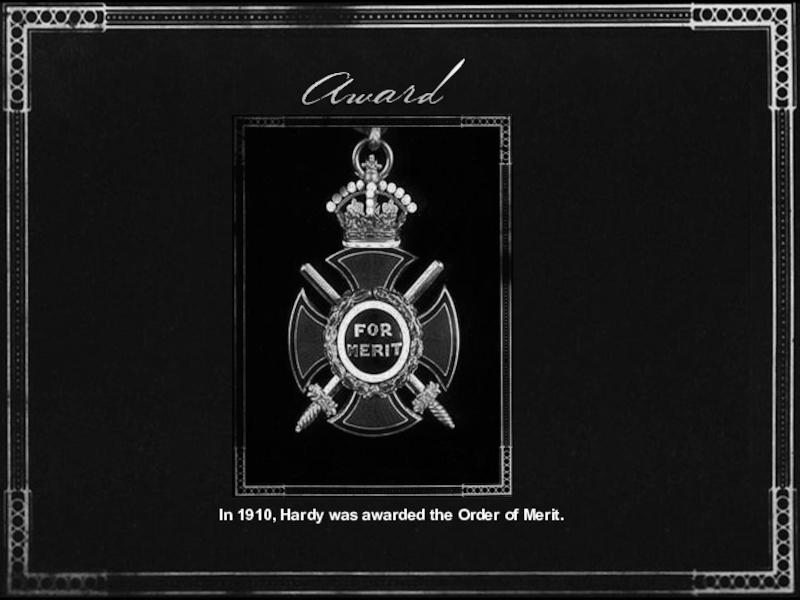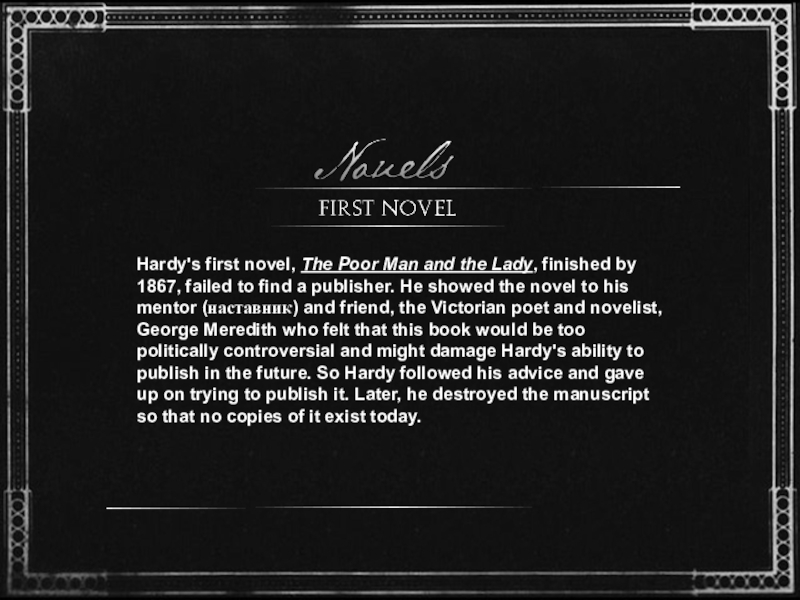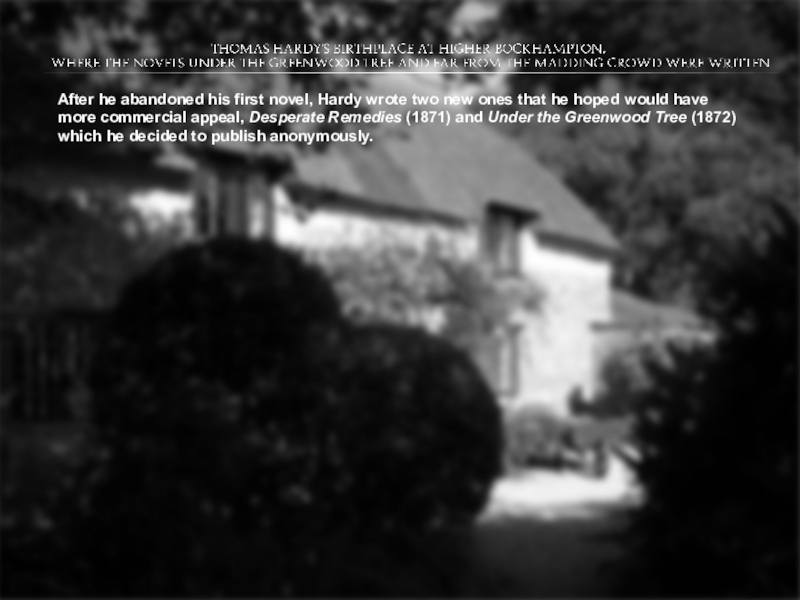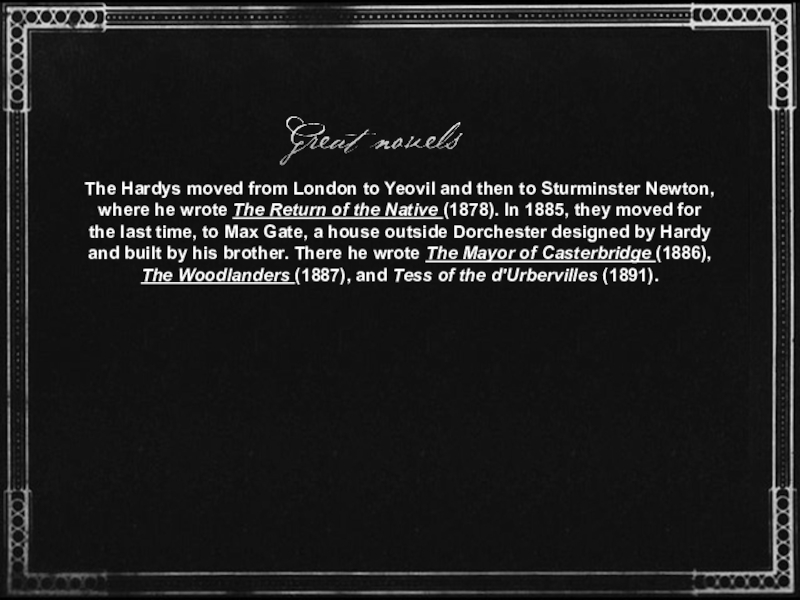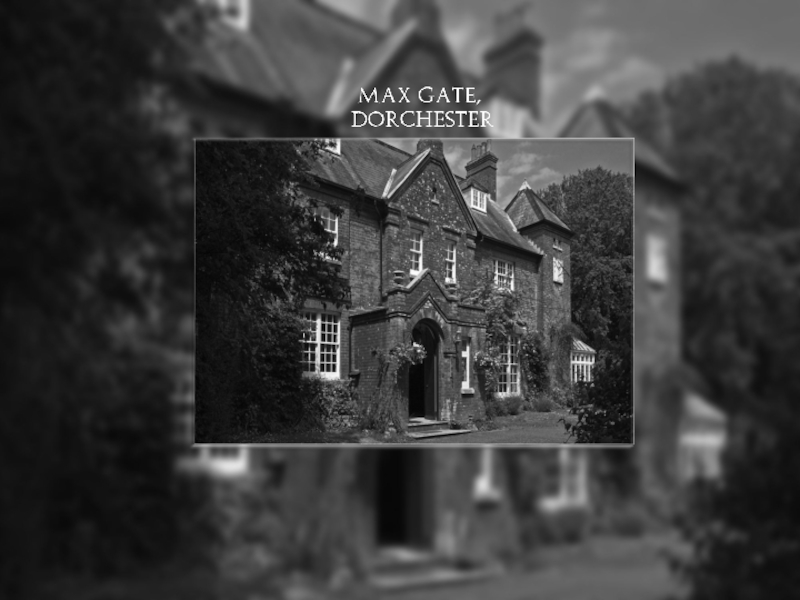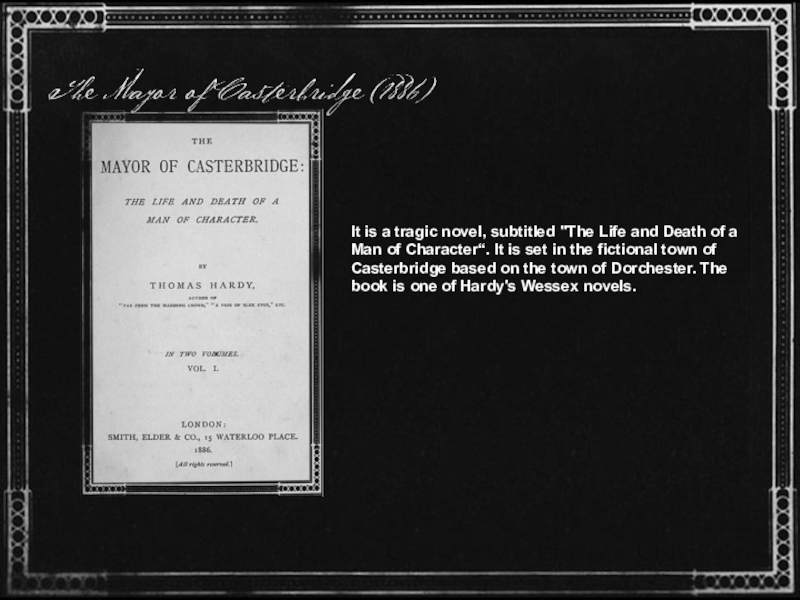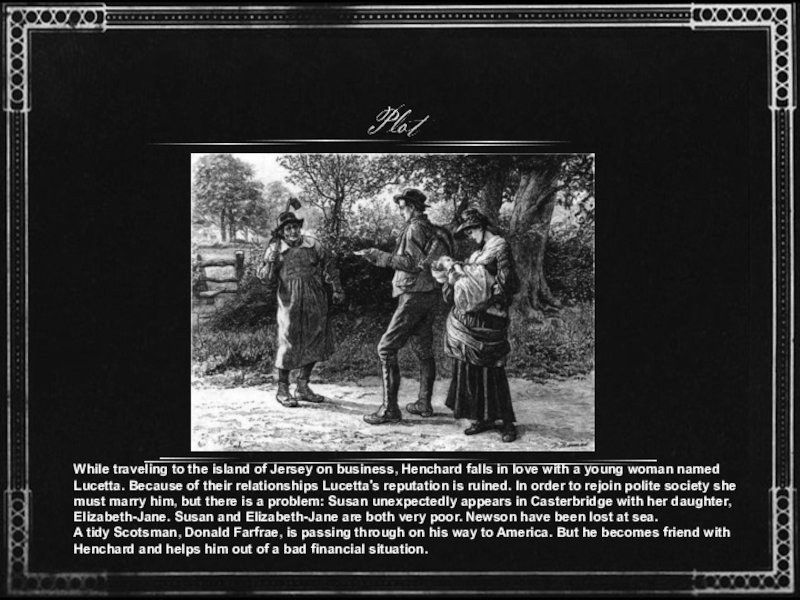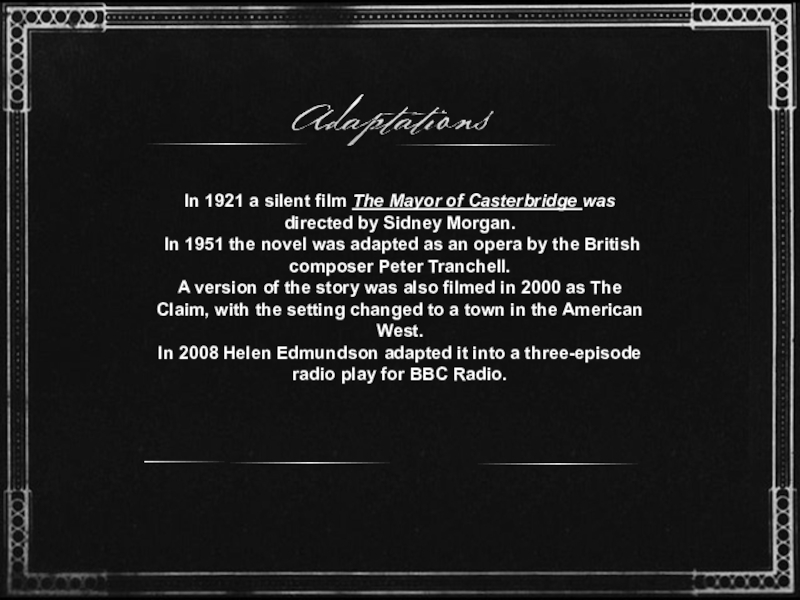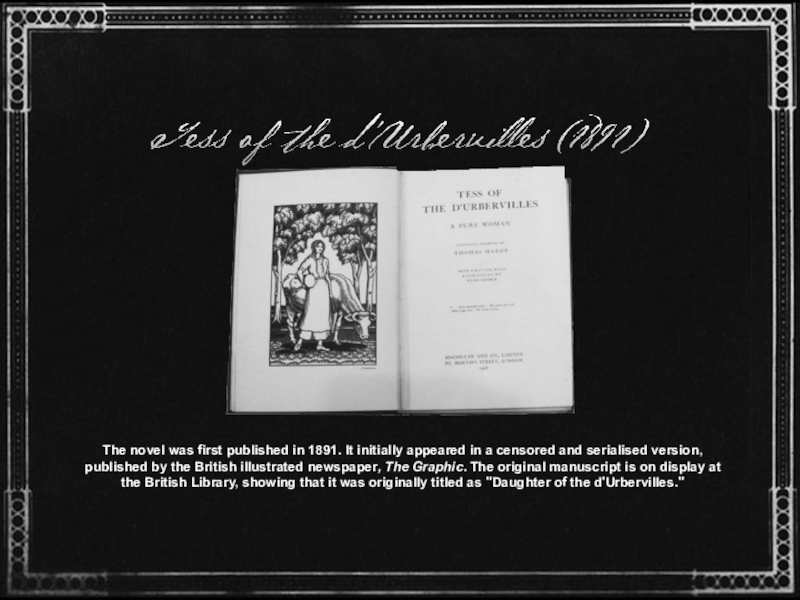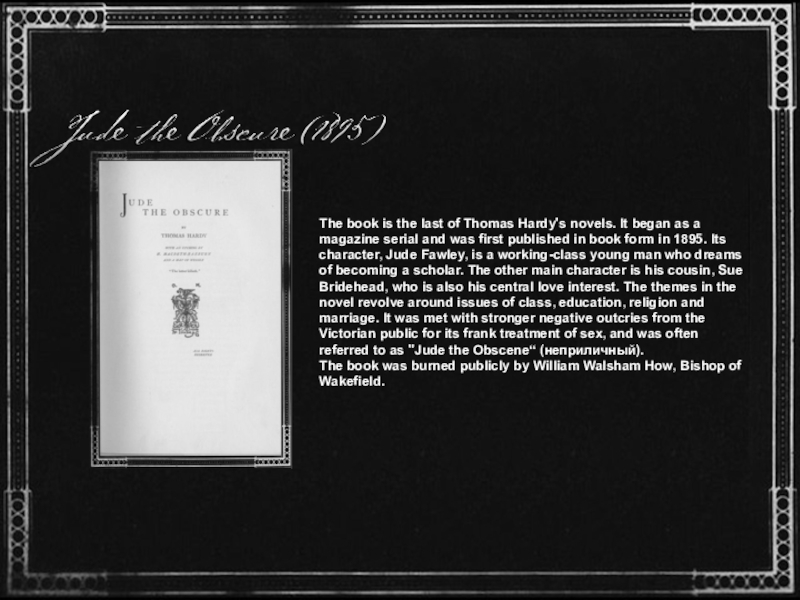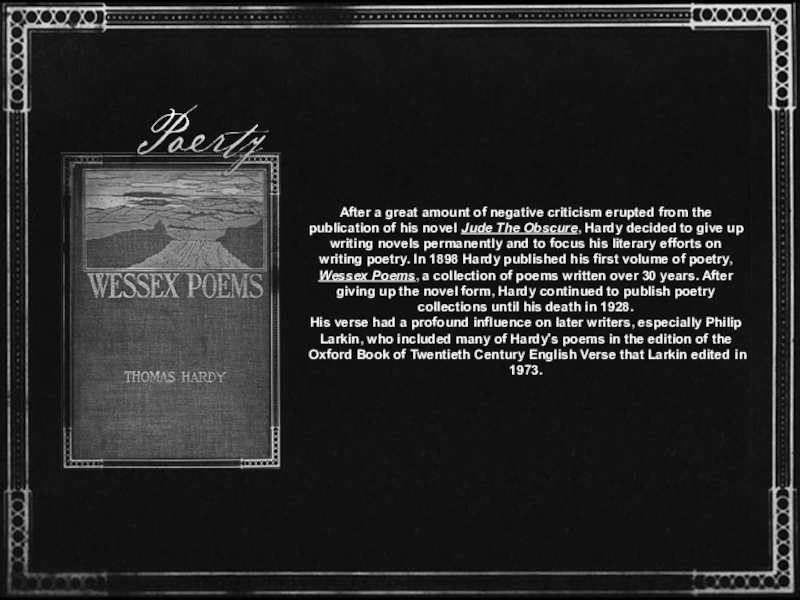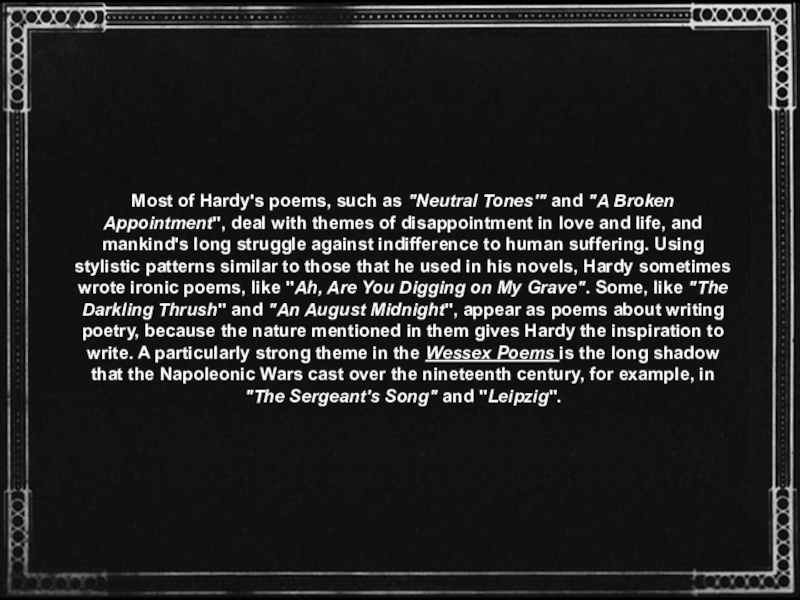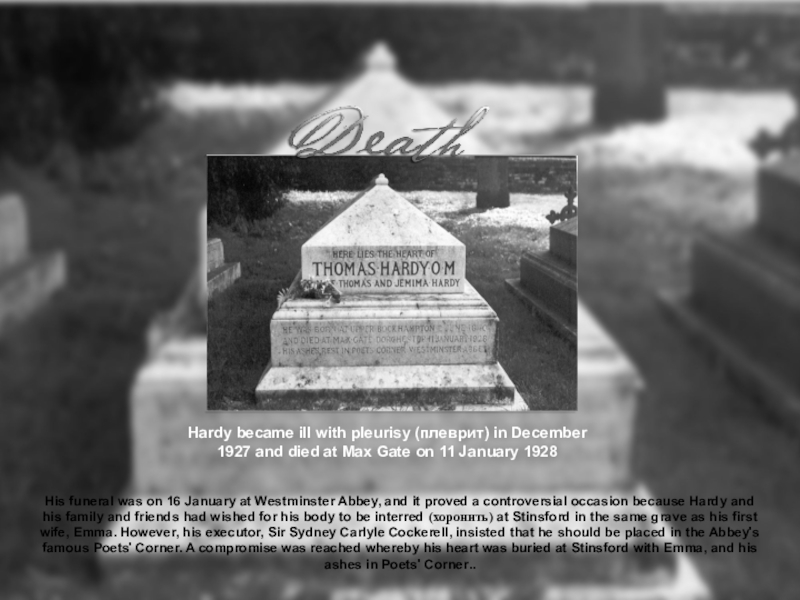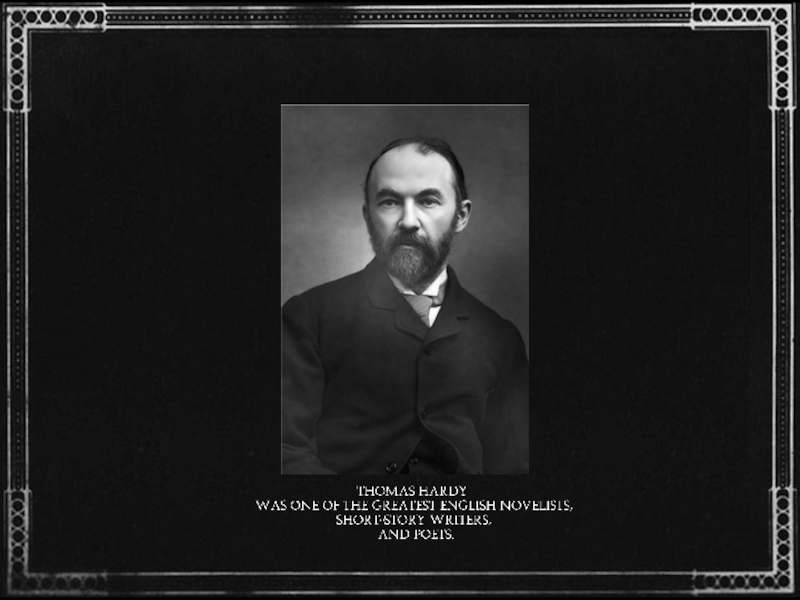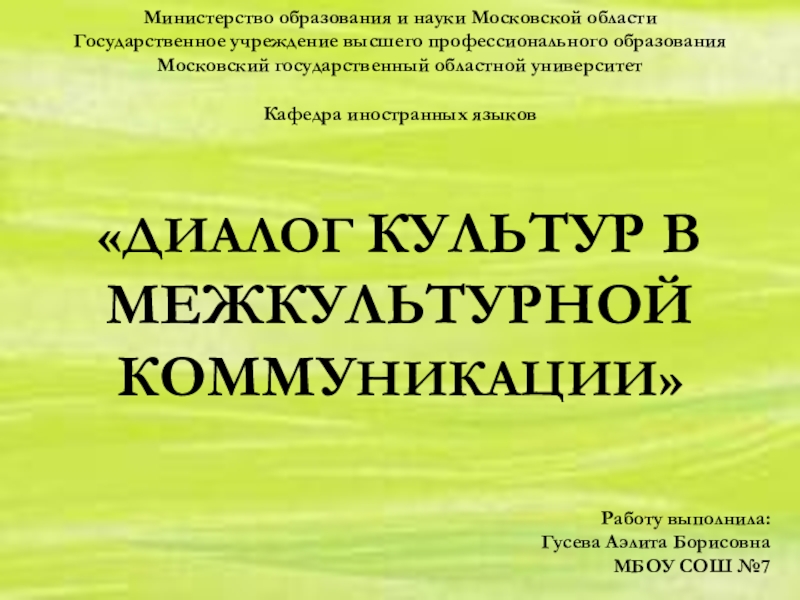- Главная
- Разное
- Образование
- Спорт
- Естествознание
- Природоведение
- Религиоведение
- Французский язык
- Черчение
- Английский язык
- Астрономия
- Алгебра
- Биология
- География
- Геометрия
- Детские презентации
- Информатика
- История
- Литература
- Математика
- Музыка
- МХК
- Немецкий язык
- ОБЖ
- Обществознание
- Окружающий мир
- Педагогика
- Русский язык
- Технология
- Физика
- Философия
- Химия
- Шаблоны, фоны, картинки для презентаций
- Экология
- Экономика
Презентация, доклад по английскому языку на тему Томас Харди (9 класс)
Содержание
- 1. Презентация по английскому языку на тему Томас Харди (9 класс)
- 2. Thomas Hardy was an English novelist and
- 3. For several years he attended Mr. Last's
- 4. In London he became a student at
- 5. Слайд 5
- 6. In 1870, while on an architectural mission
- 7. She was 39 years his junior. However,
- 8. In 1910, Hardy was awarded the Order of Merit.
- 9. Hardy's first novel, The Poor Man and
- 10. After he abandoned his first novel, Hardy
- 11. Under the Greenwood Tree or The Mellstock
- 12. The Hardys moved from London to Yeovil
- 13. Слайд 13
- 14. It is a tragic novel, subtitled "The
- 15. While traveling to the island of Jersey
- 16. In 1921 a silent film The Mayor
- 17. The novel was first published in 1891.
- 18. The book is the last of Thomas
- 19. After a great amount of negative criticism
- 20. Most of Hardy's poems, such as "Neutral
- 21. Hardy became ill with pleurisy (плеврит) in
- 22. Слайд 22
Слайд 2Thomas Hardy was an English novelist and poet who was born
Слайд 3For several years he attended Mr. Last's Academy for Young Gentlemen
Слайд 4In London he became a student at King's College. He won
Слайд 6In 1870, while on an architectural mission to restore the parish
Слайд 7She was 39 years his junior. However, he remained preoccupied with
Слайд 9Hardy's first novel, The Poor Man and the Lady, finished by
Слайд 10After he abandoned his first novel, Hardy wrote two new ones
Слайд 11Under the Greenwood Tree or The Mellstock Quire: A Rural Painting
Слайд 12The Hardys moved from London to Yeovil and then to Sturminster
Слайд 14It is a tragic novel, subtitled "The Life and Death of
Слайд 15While traveling to the island of Jersey on business, Henchard falls
A tidy Scotsman, Donald Farfrae, is passing through on his way to America. But he becomes friend with Henchard and helps him out of a bad financial situation.
Слайд 16In 1921 a silent film The Mayor of Casterbridge was directed
In 1951 the novel was adapted as an opera by the British composer Peter Tranchell.
A version of the story was also filmed in 2000 as The Claim, with the setting changed to a town in the American West.
In 2008 Helen Edmundson adapted it into a three-episode radio play for BBC Radio.
Слайд 17The novel was first published in 1891. It initially appeared in
Слайд 18The book is the last of Thomas Hardy's novels. It began
The book was burned publicly by William Walsham How, Bishop of Wakefield.
Слайд 19After a great amount of negative criticism erupted from the publication
His verse had a profound influence on later writers, especially Philip Larkin, who included many of Hardy's poems in the edition of the Oxford Book of Twentieth Century English Verse that Larkin edited in 1973.
Слайд 20Most of Hardy's poems, such as "Neutral Tones'" and "A Broken
Слайд 21Hardy became ill with pleurisy (плеврит) in December 1927 and died
His funeral was on 16 January at Westminster Abbey, and it proved a controversial occasion because Hardy and his family and friends had wished for his body to be interred (хоронить) at Stinsford in the same grave as his first wife, Emma. However, his executor, Sir Sydney Carlyle Cockerell, insisted that he should be placed in the Abbey's famous Poets' Corner. A compromise was reached whereby his heart was buried at Stinsford with Emma, and his ashes in Poets' Corner..
